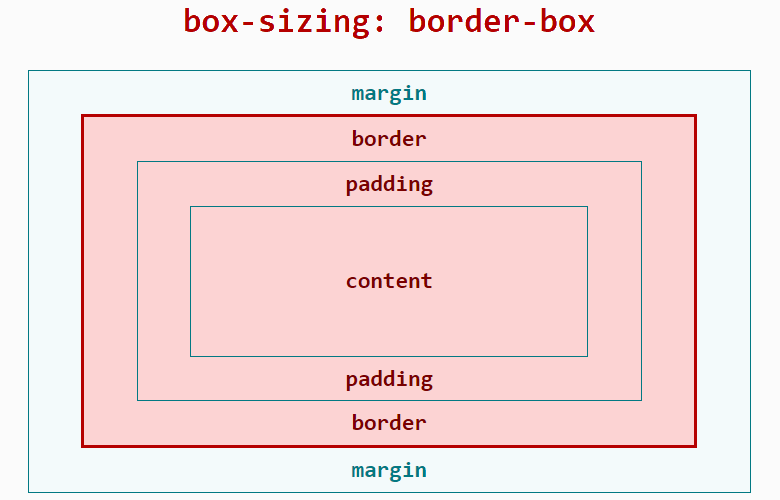# 页面样式与布局
熟悉基础知识,掌握 Flex 布局,了解动态修改样式、引入 less 预编译的方法
通过本节,你将学会:
# 盒模型
快应用布局框架使用 border-box 模型,具体表现与宽高边距计算可参考 MDN 文档box-sizing (opens new window),暂不支持 content-box 模型与手动指定 box-sizing 属性。

布局所占宽度 Width:
Width = width(包含padding-left + padding-right + border-left + border-right)
布局所占高度 Height:
Height = height(包含padding-top + padding-bottom + border-top + border-bottom)
# 长度单位
# px
与传统 web 页面不同,px是相对于项目配置基准宽度的单位,已经适配了移动端屏幕,其原理类似于rem
开发者只需按照设计稿确定框架样式中的 px 值即可。
首先,我们需要定义项目配置基准宽度,它是项目的配置文件(<ProjectName>/src/manifest.json)中config.designWidth的值,默认不填则为 750
然后, 设计稿1px与框架样式1px转换公式如下:
设计稿1px / 设计稿基准宽度 = 框架样式1px / 项目配置基准宽度
示例如下:
若设计稿宽度为 640px,元素 A 在设计稿上的宽度为 100px,实现的两种方案如下:
方案一:
修改项目配置基准宽度:将项目配置基准宽度设置为设计稿基准宽度,则框架样式1px等于设计稿1px
- 设置
项目配置基准宽度,在项目的配置文件(<ProjectName>/src/manifest.json)中,修改config.designWidth:
{
"config": {
"designWidth": 640
}
}
2
3
4
5
- 设置元素 A 对应的框架样式:
width: 100px;
方案二:
不修改项目配置基准宽度:若当前项目配置的项目配置基准宽度为 750,设元素 A 的框架样式 xpx,由转换公式得:100 / 640 = x / 750
- 设置元素 A 对应的框架样式:
width: 117px;
# 设置定位
1060 开始,position 将支持三种属性值:relative、absolute 和 fixed,并且默认值为 relative,入门可以参考MDN 文档 (opens new window)
# 设置样式
开发者可以使用内联样式、tag选择器、class选择器、id选择器来为组件设置样式
同时也可以使用并列选择、后代选择器设置样式
详细的文档可以查看此处
注意: template 的样式读取范围,只包括内联样式与当前 ux 文件的<style>标签内的样式与引入的 css/less/scss,如果一个 ux 文件被包装成自定义组件并被其他父组件引用,其样式并不能响应父组件的样式。
示例如下:
<template>
<div class="tutorial-page">
<text style="color: #FF0000;">内联样式</text>
<text id="title">ID选择器</text>
<text class="title">class选择器</text>
<text>tag选择器</text>
</div>
</template>
<style>
.tutorial-page {
flex-direction: column;
}
/* tag选择器 */
text {
color: #0000FF;
}
/* class选择器(推荐) */
.title {
color: #00FF00;
}
/* ID选择器 */
#title {
color: #00A000;
}
/* 并列选择 */
.title, #title {
font-weight: bold;
}
</style>
2
3
4
5
6
7
8
9
10
11
12
13
14
15
16
17
18
19
20
21
22
23
24
25
26
27
28
29
30
# 通用样式
通用样式如 margin,padding 等属性可以点击此处
# Flex 布局示例
框架使用Flex布局,关于Flex布局可以参考外部文档A Complete Guide to Flexbox (opens new window)
flex 布局的支持也可以在官网文档的通用样式查询
div 组件为最常用的 Flex 容器组件,具有 Flex 布局的特性;text、a、span、label 组件为文本容器组件,其它组件不能直接放置文本内容
示例如下:
<template>
<div class="tutorial-page">
<div class="item">
<text>item1</text>
</div>
<div class="item">
<text>item2</text>
</div>
</div>
</template>
<style>
.tutorial-page {
/* 交叉轴居中 */
align-items: center;
/* 纵向排列 */
flex-direction: column;
}
.item {
/* 有剩余空间时,允许被拉伸 */
/*flex-grow: 1;*/
/* 空间不够用时,不允许被压缩 */
flex-shrink: 0;
/* 主轴居中 */
justify-content: center;
width: 200px;
height: 100px;
margin: 10px;
background-color: #FF0000;
}
</style>
2
3
4
5
6
7
8
9
10
11
12
13
14
15
16
17
18
19
20
21
22
23
24
25
26
27
28
29
30
31
# 动态修改样式
动态修改样式有多种方式,与传统前端开发习惯一致,包括但不限于以下:
- 修改class:更新组件的 class 属性中使用的变量的值
- 修改内联style:更新组件的 style 属性中的某个 CSS 的值
- 修改绑定的对象:通过绑定的对象控制元素的样式
- 修改绑定的样式字符串:通过样式字符串控制元素的样式
示例如下:
<template>
<div style="flex-direction: column;">
<!-- 修改 class -->
<text class="normal-text {{ className }}" onclick="changeClassName">点击我修改文字颜色</text>
<!-- 修改内联 style -->
<text style="color: {{ textColor }}" onclick="changeInlineStyle">点击我修改文字颜色</text>
<!-- 修改绑定的对象 (1030+) -->
<text style="{{ styleObj }}" onclick="changeStyleObj">点击我修改文字颜色</text>
<!-- 修改绑定的样式字符串 (1030+) -->
<text style="{{ styleText }}" onclick="changeStyleText">点击我修改文字颜色</text>
</div>
</template>
<style>
.normal-text {
font-weight: bold;
}
.text-blue {
color: #0faeff;
}
.text-red {
color: #f76160;
}
</style>
<script>
export default {
data: {
className: 'text-blue',
textColor: '#0faeff',
styleObj: {
color: '#f00'
},
styleText: 'color: #0f0'
},
changeClassName () {
this.className = 'text-red'
},
changeInlineStyle () {
this.textColor = '#f76160'
},
changeStyleObj () {
this.styleObj = {
color: '#00f'
}
},
changeStyleText () {
this.styleText = 'color: #0f0'
}
}
</script>
2
3
4
5
6
7
8
9
10
11
12
13
14
15
16
17
18
19
20
21
22
23
24
25
26
27
28
29
30
31
32
33
34
35
36
37
38
39
40
41
42
43
44
45
46
47
48
49
50
51
# 引入 less/scss 预编译
# less 篇
less 语法入门请参考less 中文官网 (opens new window)学习
使用 less 请先安装相应的类库:less、less-loader,
npm i less less-loader
在<style>标签上添加属性lang="less"
<template>
<div class="tutorial-page">
<text id="title">less示例!</text>
</div>
</template>
<style lang="less">
/* 引入外部less文件 */
@import './style.less';
/* 使用less */
</style>
2
3
4
5
6
7
8
9
10
# scss 篇
scss 语法入门请参考scss 中文官网 (opens new window)学习
使用 scss 请在快应用项目下执行以下命令安装相应的类库:node-sass、sass-loader,
npm i node-sass sass-loader
在<style>标签上添加属性lang="scss" 示例如下:
<template>
<div class="tutorial-page">
<text id="title">less示例!</text>
</div>
</template>
<style lang="scss">
/* 引入外部scss文件 */
@import './style.scss';
/* 使用scss */
</style>
2
3
4
5
6
7
8
9
10
11
